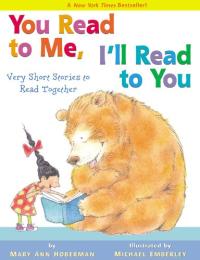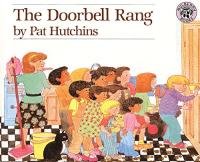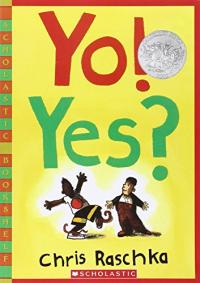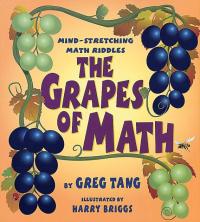Key Information
Focus
When To Use This Strategy
Appropriate Group Size
Partner reading is a cooperative learning strategy in which two students work together to read an assigned text. This strategy is often used as part of the Peer-Assisted Learning Strategies (PALS). PALS is a class-wide peer tutoring program in which teachers carefully partner a student with a classmate. The partner reading strategy allows students to take turns reading and provide each other with feedback as a way to monitor comprehension.
Why use partner reading?
- Students take turns reading and provide each other with corrective feedback, ensuring accurate reading practice.
- Reading with a partner provides a model of fluent reading and helps students practice reading with expression.
- Partners reading the same text can help each other monitor comprehension.
- Partner Reading provides direct opportunities for a teacher to circulate in the class, listen to students read, and offer individualized instruction.
How to use partner reading
Begin by creating mixed-ability partner pairs with an instructional focus in mind. For example, you might match a more accurate reader with one who is less accurate, a more fluent reader with a less fluent one, or a student with strong comprehension and a one who needs to practice self-monitoring.
Choose the assigned reading and introduce the text to the students.
When introducing student-partnerships, ensure Partner A is the stronger reader and Partner B is the one more in need of the practice, but do not tell students this logic behind the pairings. Students need only to know whether they are Partner A or B.
Model the procedure to ensure that students understand the routines.
- Partner A will read aloud for five minutes as Partner B follows along.
- Then, Partner B will read aloud from that same section of text, as Partner A follows along.
- If either partner makes an error while reading, the other will say, “The word is ___. What’s the word?” The reader will repeat back the correct word. Then, the partner will say, “Now reread.” and the reader will go back to the beginning of the sentence, this time reading without error.
Watch a lesson (whole class)
PAL or “pair” reading (a method based on Lynn and Douglas Fuchs’ Peer Assisted Learning Strategies) helps promote speed, accuracy, and proper expression in reading as well as practice comprehension skills to improve students’ understanding of what they read. (From the Balanced Literacy Diet: Putting Research into Practice in the Classroom)
Watch a lesson (whole class, 2nd grade)
Watch a second grade class engaging in a partner reading activity, using instructional-level text. (REL Southeast)
Watch a demonstration
This video describes a procedure for students to read with a partner. It explains to students how they can help their partner when they miss a word. From Anita Archer’s book, Explicit Instruction. (Lindsay Kemeny)
Watch a demonstration: “Ask, Then Tell” error correction strategy
Teach students how to help each other when partner reading. From Anita Archer’s book, Explicit Instruction. (Lindsay Kemeny)
Watch a demonstration
Two teachers model partner reading with a comprehension check after each partner reads.
Collect resources
5 Partner Reading Activities for K-1 Students ›
Consider watching the webinar “Tier 1 Classwide Intervention for Reading” to learn how oral reading fluency data can be used to make partner reading a success.
Differentiate instruction
For second language learners, students of varying reading skill, and younger learners
Teachers may wish to include the following additional activities for varying skill levels:
Story retelling: students work together to retell the story by cooperatively providing input and correcting mistakes
Summarization: students support each other in developing a summary of the passage in 10 words or less
Writing: students write down the summary they developed and/or responses to the following:
- the who or what of the paragraph
- the most important thing about who or what
- the main idea
You might intentionally pair an English Learner with a fully-fluent student to support language development (see the following resource for more information: Reading Comprehension Strategies for English Language Learners .
Partner reading can even be done with cross age/grade partners.
Extend the learning
Social Studies
This comprehensive teacher’s guide to partner reading includes examples of using the strategy in the study of the American Revolution (see page 9 of the guide)
Partner Reading: An Evidence-Based Practice (Teacher’s Guide) ›
See the research that supports this strategy
Armbruster, B., Lehr, F., & Osborn, J. (2001). Put Reading First: The Research Building Blocks for Teaching Children to Read. Center for the Improvement of Early Reading Achievement. National Institute for Literacy. http://www.nifl.gov/partnershipforreading/publications/reading_first1fluency.html.
Fuchs, D., Fuchs, L., & Burish, P. (2000). Peer-Assisted Learning Strategies: An Evidence-Based Practice to Promote Reading Achievement. Learning Disabilities Research and Practice, 15(2), 85-91.
Saenz, L., Fuchs, L., & Fuchs, D. (2005) Peer-Assisted Learning Strategies for English Language Learners with Learning Disabilities. Exceptional Children, (71).
Texas Education Agency. (2002). Fluency: Instructional Guidelines and Student Activities.
Vanderbilt Kennedy Center for Research on Human Development. (n.d.). Peer-Assisted Learning Strategies. Retrieved 2008, January 21, from http://kc.vanderbilt.edu/pals/.
Children’s books to use with this strategy

You Read to Me, I’ll Read to You: Very Short Stories to Read Together

Tell Me a Story, Mama

The Doorbell Rang

Joyful Noise: Poems for Two Voices

Yo! Yes?

